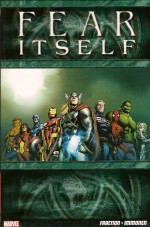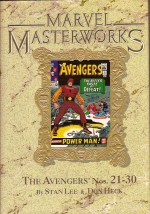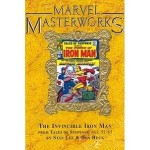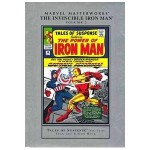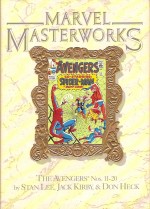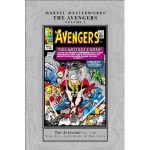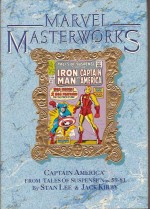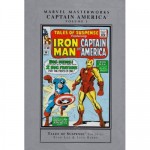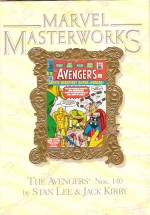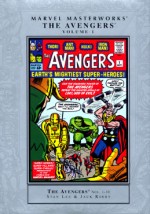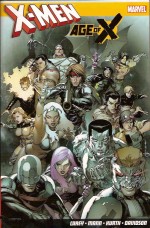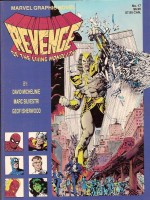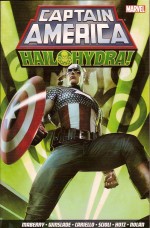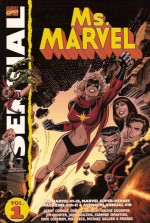
By Gerry Conway, Chris Claremont, John Buscema, Sal Buscema, Dave Cockrum, Mike Vosburg & various (Marvel)
ISBN: 978-0-7851-2499-3
Until relatively recently American comics and especially Marvel had very little in the way of positive female role models and almost no viable solo stars. Although there was a woman starring in the very first comic of the Marvel Age, the Invisible Girl took years to become became a potent and independent character in her own right.
The company’s very first starring heroine was Black Fury, a leather-clad, whip-wielding crimebuster from the newspaper strips created by Tarpe Mills in April 1941. She was repackaged as a resized reprint for Timely’s funnybooks and renamed Miss Fury for a four-year run from 1942-1946 – although the tabloid strip survived until 1952. Fury was actually predated by the Silver Scorpion who debuted in Daring Mystery Comics #7 (April 1941), but she was relegated to a minor position in the book’s line-up and a very short shelf-life.
Miss America first appeared in the anthology Marvel Mystery Comics #49 (November1943), created by Otto Binder and artist Al Gabriele and after a few more appearances won her own title in early 1944 received her own book. Miss America Comics lasted but she didn’t as with the second issue (November1944) the format was changed, becoming a combination teen comedy/fashion/domestics tips magazine, and feisty super-heroics were steadily squeezed out. The publication is most famous now for introducing virginal evergreen teen ideal Patsy Walker.
A few others appeared immediately after the War, many spin-offs and sidekicks such as female Sub-Mariner Namora (debuting in Marvel Mystery Comics #82, May 1947 and graduating to her own three issue series in 1948), the Human Torch‘s secretary Mary Mitchell who as Sun Girl starred in her own three issue 1948 series before becoming a wandering sidekick and guest star in Sub-Mariner and Captain America Comics.
Masked detective Blonde Phantom was created by Stan Lee and Syd Shores for All Select Comics #11 (Fall 1946) and sort-of goddess Venus debuted in her own title in August 1948, becoming the gender’s biggest success until the advent of the Jungle Girl fad in the mid-1950s; mostly by dint of the superb stories and art by the great Bill Everett and by ruthlessly changing genres from crime to romance to horror every five minutes…
Jann of the Jungle (by Don Rico & Jay Scott Pike) was just part of an anthology line-up in Jungle Tales #1 (September 1954), but took over the title with the eighth issue (November 1955). Jann of the Jungle continued until issue June 1957 (#17) and spawned a host of in-company imitators such as Leopard Girl, Lorna the Jungle Queen and so on…
During the costumed hero boom of the 1960s Marvel experimented with a title shot for Madame Medusa in Marvel Super-Heroes (#15, July 1968) and a solo series for the Black Widow in Amazing Adventures # 1-8 (August 1970-September 1971). Both were sexy, reformed villainesses, not wholesome girl-next-door heroines… and neither lasted alone for long.
As the costumed crazies craze began to subside in the 1970s, Stan Lee and Roy Thomas looked into creating a girl-friendly boutique of heroines written by women, beginning with Claws of the Cat by Linda Fite, Marie Severin & Wally Wood and Night Nurse by Jean Thomas and Win Mortimer (both #1’s cover-dated November 1972). A new jungle goddess Shanna the She-Devil #1, by Carole Seuling & George Tuska, debuted in December 1972; but despite these impressive creative teams none of these fascinating experiments lasted beyond a fifth issue.
Red Sonja, She-Devil with a Sword, caught every one’s attention in Conan the Barbarian #23 (February 1973) and eventually gained her own series and The Cat mutated into Tigra, the Were-Woman in Giant-Size Creatures #1 (July 1974) but the general editorial position was that books about chicks didn’t sell.
The company kept trying and eventually found the right mix at the right time with Ms. Marvel who launched in her own title cover-dated January 1977. She was followed by the equally copyright-protecting Spider-Woman in Marvel Spotlight #32 (February 1977, winning her own title 15 months later) and Savage She-Hulk (#1, February 1980) as well as the music-biz sponsored Dazzler who premiered in Uncanny X-Men #130 that same month, before inevitably graduating to her own book.
Ms. Marvel was actually Carol Danvers, a United States Air Force security officer introduced in Marvel Super-Heroes #13 (March 1968): the second episode of the saga of Kree warrior Mar-Vell, who had been dispatched to Earth as a spy after the Fantastic Four had repulsed the aliens twice in two months (see Essential Fantastic Four volume 4 and Essential Captain Marvel volume 1).
The series was written by Roy Thomas and illustrated by Gene Colan and the immensely competent Carol investigated the Mar-Vell’s assumed identity of Walter Lawson for months until she was caught up in a devastating battle between the now-defecting alien and his nemesis Yon-Rogg. She was caught in a climactic explosion of alien technology and pretty much vanished from sight until Gerry Conway, John Buscema & Joe Sinnott revived her for ‘This Woman, This Warrior!’ (Ms. Marvel #1, January 1977) as a new chapter began for the company and the industry…
This volume, collecting Ms. Marvel #1-23, relevant portions of Marvel Super-Heroes Magazine #10-11 and Avengers Annual #10, opens with the irrepressible and partially amnesiac Danvers moving to New York to become editor of “Woman†a new magazine for modern misses published by Daily Bugle owner J. Jonah Jameson. Never having fully recovered from her near-death experience, Danvers had left the military and drifted into writing, slowly growing in confidence until the irascible publisher had made her an offer she couldn’t refuse…
At the same time as Carol was getting her feet under a desk a mysterious new masked heroine began appearing, such as when she pitched up to battle the sinister Scorpion in a brutal bank raid. The villain narrowly escaped to rendezvous with Professor Kerwin Korwin of AIM (a high-tech secret society claiming to be Advanced Idea Mechanics) who had promised to increase the Scorpion’s powers and allow him to take long-delayed revenge on Jameson – whom the demented thug blamed for his freakish condition…
Danvers had been secretly having premonitions and blackouts since her involvement in the final battle between Mar-Vell and Yon-Rogg and had no idea she was transforming into Ms. Marvel. Her latest vision-flash occurred too late to save the publisher from abduction but her “Seventh Sense†did allow her to trace the Scorpion before her unwitting new boss is injured, whilst her incredible physical powers and knowledge of Kree combat techniques enabled her to easily trounce the maniac.
‘Enigma of Fear!’ featured a return engagement for the Scorpion as Korwin and AIM made Ms. Marvel their latest science project. Whilst the Professor turned himself into an armoured assassin codenamed Destructor, Carol’s therapist Mike Barnett made an analytical breakthrough with his patient and discovered she was a masked metahuman even before she did. Although she again felled the Scorpion Ms. Marvel was ambushed by the Destructor, but awoke in #3 (scripted by Chris Claremont) to turn the tables in ‘The Lady’s Not For Killing!’
Travelling to Cape Canaveral to interview old friend Salia Petrie for a women astronauts feature, Danvers was soon battling an old Silver Surfer foe on the edge of space and all her occluded memories returned just in time for a final confrontation with the Destructor during which she almost learnt that ‘Death is the Doomsday Man!’ (by Claremont, Jim Mooney & Sinnott).
Android Avenger the Vision guest-starred in #5 as Ms. Marvel crossed a ‘Bridge of No Return’. After Dr. Barnett revealed he knew her secret, Carol was forced to battle the Vision when AIM tricked the artificial hero into protecting a massive, mobile “dirty†bomb, before ‘…And Grotesk Shall Slay Thee!’ pitted her against a subterranean menace determined to eradicate the human race, culminating in a waking ‘Nightmare!’ when she was captured by AIM’s deadly leader Modok and all her secrets were exposed to his malign scientific scrutiny.
Grotesk returned in #8 as ‘The Last Sunset…?‘ almost dawned for the entire planet, whilst ‘Call Me Death-Bird!’ (illustrated by Keith Pollard, Sinnott & Sam Grainger) introduced a mysterious, murderous avian alien who would figure heavily in many an X-Men and Avengers saga, but who spent her early days allied to the unrelenting forces of AIM as they attacked once more in ‘Cry Murder… Cry Modok!’ (art by Sal Buscema & Tom Palmer).
Frank Giacoia inked #11’s ‘Day of the Dark Angel!’ wherein supernal supernatural menaces Hecate, the Witch-Queen and the Elementals attacked the Cape, preventing Carol from rescuing Salia Petrie and her space shuttle crew from an incredible inter-dimensional disaster…
The astonishing action continued in ‘The Warrior… and the Witch-Queen!’ (Sinnott inks) before ‘Homecoming!’ (Mooney & Sinnott) explored Carol’s blue collar origins in Boston as she battled a pair of marauding aliens and ‘Fear Stalks Floor 40’ (illustrated by Carmine Infantino & Steve Leialoha) pitted her against her construction worker, anti-feminist dad even as she was saving his business from the sinister sabotage of the Steeplejack.
Mooney & Tony DeZuniga provided the art for ‘The Shark is a Very Deadly Beast!’ as undersea villain Tiger Shark kidnapped the Sub-Mariner’s teenaged cousin Namorita and only Ms. Marvel, after a brief side trip to Avengers Mansion, was on hand to provide succour in ‘The Deep Deadly Silence!’ (inked by Frank Springer). ‘Shadow of the Gun!’ (Mooney & DeZuniga) enhanced the X-Men connection by introducing shape-shifting mutant Mystique in a raid on S.H.I.E.L.D. to purloin a new super-weapon, which saw impressive service in #18’s ‘The St. Valentine’s Day/Avengers Massacre!’ (Mooney & Ricardo Villamonte): a blockbuster battle that featured the beginning of a deadly plot from within the distant Kree Imperium.
The scheme swiftly culminated in ‘Mirror, Mirror!’ (Infantino & Bob McLeod) as the Kree Supreme Intelligence attempted to reinvigorate his race’s stalled evolutionary path by kidnapping the Earth/Kree hybrid Carol Danvers. However with both her and Captain Marvel hitting his emissary Ronan the Accuser eventually the plotters took the hint and went home empty handed…
Ms. Marvel #20 saw a great big makeover as Carol Danvers finally created her own look and identity in ‘The All-New Ms. Marvel’ courtesy of Claremont, Dave Cockrum & Bob Wiacek wherein the utterly re-purposed hero tackled a hidden kingdom of intelligent post-atomic dinosaurs infesting the American deserts, leading to a catastrophic clash with ‘The Devil in the Dark!’ (inked by Al Milgrom).
Now one of the most hands-on, bombastic battlers in the Marvel pantheon, she was more than ready for a return match with Death-Bird in ‘Second Chance!’ (art by Mike Vosburg & Mike Zeck), but thrown for a total loop when she was fired from Woman Magazine. All these changes came too late as the series’ sales had earmarked it for cancellation. ‘The Woman Who Fell to Earth’ (inked by Bruce D. Patterson) resolved the long-running disappearance of Salia Petrie in a tale guest-starring the time travelling Guardians of the Galaxy, just in time for the end of the road.
The series ended there but two more stories were in various stages of preparation and finally saw print in 1992 (the Summer and Fall issues of oversized anthology publication Marvel Super-Heroes Magazine #10-11) beginning with an untitled, ferocious fight with mutant maniac Sabretooth (by Claremont & Vosburg), followed by ‘Cry, Vengeance!’ (by Claremont, Simon Furman, Vosburg & Mike Gustovich) as Ms. Marvel, now a card-carrying Avenger, faced off against Mystique and her brotherhood of Evil Mutants. This tale features an additional section which explained how Carol was attacked by the young mutant Rogue, permanently lost her powers and memory and was eventually reborn as the cosmic being Binary: which is all well and good but somewhat takes the punch out of the last tale in this collection.
Admittedly Ms. Marvel only has a peripheral role in ‘By Friends… Betrayed!’ from Avengers Annual #10 (1981, by Claremont, Michael Golden & Armando Gil), as a powerless, amnesiac Carol Danvers was rescued from drowning by Spider-Woman, prior to Mystique and Rogue launching an all-out attack on the World’s Mightiest Heroes whilst attempting to free the Brotherhood from custody.
Spectacular and utterly compelling the tale seemed to write a satisfactory conclusion to Carol’s career but in comics nothing is forever…
This comprehensive monochrome chronicle also includes full entries on Death-Bird, Captain Marvel, the Kree and Rogue, taken from the Marvel Universe Handbook.
Always entertaining, often groundbreaking and painfully patronising (occasionally at the same time), the early Ms. Marvel, against all odds, grew into the modern Marvel icon of capable womanhood we see today. These adventures are a valuable grounding of the contemporary champion but also still stand up on their own as intriguing examples of the inevitable fall of even the staunchest of male bastions – superhero stories…
© 1977, 1978, 1979, 1981, 1992, 2007 Marvel Characters, Inc. All Rights Reserved.
